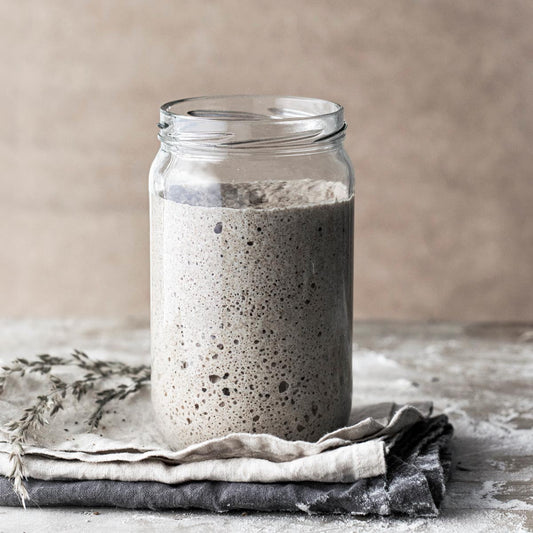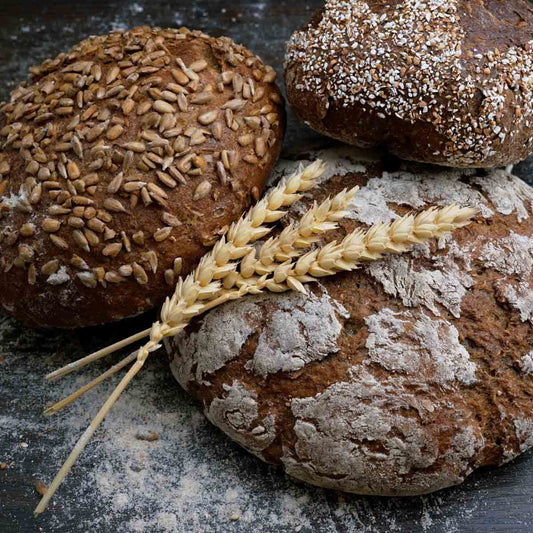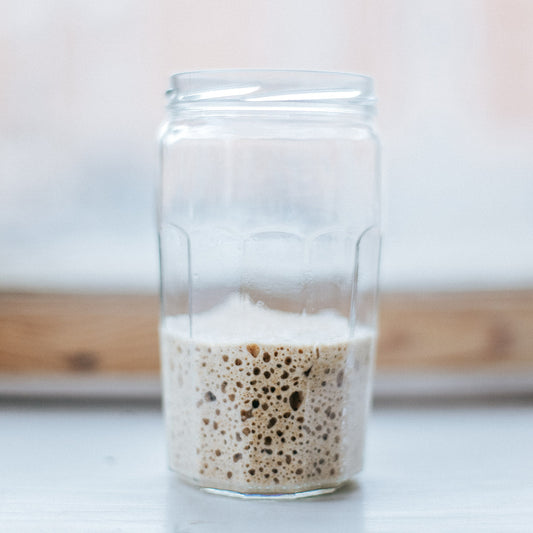Why Activated Grains
Jump to a Section:
First, what are activated grains?
Why is it important to activate grains?
Advantages of activated grains
Health benefits of activated grains
First, What Are Activated Grains?
Activation is a way of preparing grains that unlocks vitamins and minerals, increases nutrient absorption, and improves digestibility. It uses time-honored techniques such as soaking, sprouting, and fermenting to transform grains from a dormant state into a more nutritious, digestible, and nourishing form.
To understand how activation works and why it's crucial for our health, it helps to start with a simple question. What are grains?

Are grains seeds?
All grains are seeds. Oats, barley, millet, rice, corn, wheat, spelt, rye – they're seeds from grass-like crops called cereals. Grains are rich in healthy carbohydrates, dietary fiber, an array of B-vitamins, minerals like iron, zinc, and magnesium, polyphenols, and other antioxidants. They're little densely packed balls of food surrounding an embryo.
In nature, a grain seed's biological imperative is to find a nice habitable place to live and put down roots. They're able to lie dormant for months, even years, and the moment a seed encounters suitable conditions, it wakes up. Enzymes are activated, stored energy reserves are converted into bioavailable food, the seed bursts open, and a shoot emerges. All of those vital nutrients and carbs we mentioned above are used to fuel the growth of a new seedling.
Humans have learned to hijack a seed's biology and use it to our advantage. Because they're able to store for such long periods without compromising their nutritional value, grains have become an immensely valuable staple food. Grain surpluses can feed families, communities, and entire civilizations, through good times and bad.
The same attributes that make grains suitable for long-term storage also make them hard for humans to digest. Grains are masterfully designed to protect their stored nutrients and food reserves while in a dormant state, which prevents your body from absorbing their vitamins and minerals and impedes proper digestion of starches and proteins.
Why is it Important to Activate Grains?
For a seed to fulfill its evolutionary destiny of becoming a plant, it mustn't a)germinate in the wrong place or at the wrong time and b) get eaten. But seeds can't run away from predators, nor can they actively seek a nice sunny patch of soil to call home. Instead, they're built to endure. Grains are equipped with an arsenal of antinutrients, enzyme inhibitors, and lectins to safeguard their vital reserves and ward off hungry pests.
1) Phytic Acid
Phytic acid is a seed's primary storage form of phosphorus, an essential mineral that a seedling needs to grow. It's considered an antinutrient because of how it behaves when consumed. Phytic acid chelates minerals like iron, zinc, magnesium, and manganese, meaning it binds to them and prevents your body from absorbing those nutrients. It's so potent that phytic acid can cause mineral deficiencies by binding to the minerals in other foods you're eating as well, and mineral deficiencies lead to disease.
2) Amylase/Trypsin Inhibitors
Grains contain enzyme inhibitors like amylase/trypsin inhibitors (ATI) which help regulate the sprouting process by preventing premature germination. ATIs also act as a natural defense against pests by preventing the metabolism of starches – a seed's most abundant food source – and proteins. While they're good for the seed, these enzyme-inhibitors can make it difficult for the human body to digest grains by preventing digestive enzymes from breaking down highly complex starches and proteins. A lot of research is going into ATIs these days because of their role in Celiac Disease and non-celiac wheat sensitivities.
3) Lectins
Grains contain lectins, proteins designed to protect seeds from pests. A well-known lectin is Wheat germ agglutinin (WGA), which is found primarily in the germ of wheat grains. WGA helps protect wheat from fungi, bacteria, and pests, but it's also associated with digestive and health issues in humans.
4) Gluten
The most famous one of all. Certain grains like wheat, rye, barley, spelt, and einkorn contain gluten, a plant protein that resists digestion by enzymes in our gut. We can't fully break down gluten in our gut. Instead, gluten gets broken down into protein-building blocks like Gliadin. In some cases, Gliadin, a large peptide, can permeate the gut lining and trigger an autoimmune reaction – Celiac disease. But gluten and gliadin intolerance are also associated with other non-celiac gluten sensitives and other wheat-related issues.

Advantages of Activating Grains
This brings us to the crux of the article. Why should we activate grains?
We've covered that grains, while in a dormant state, contain all of the unsavory characteristics mentioned above; antinutrients, lectins, and enzyme inhibitors. These plant compounds serve an essential role by protecting the grain seed until it's ready to germinate. They also make it difficult for your body to access the b-vitamins and minerals present in grains, and they can hinder starch and protein digestion as well. But, humans have been able to rely on grains as a staple food for at least 10,000 years because we've learned how to activate grains and unlock their stored potential.
Activation uses simple, ancient techniques to mimic the natural germination process and transforms grains into their most nutritious, digestible, and nourishing state. Methods like soaking, sprouting, and fermentation neutralize phytic acid and enzyme inhibitors and activate beneficial enzymes that break down starches and proteins. This process unlocks vitamins and minerals, like B-vitamins, iron, zinc, and magnesium, thus improving their bioavailability. And the pre-digested starches and proteins are far more manageable for our digestive systems to utilize.

Health Benefits of Activated Grains
1) Enhanced Nutrition
Activation improves the bioavailability of vitamins and minerals and increases nutrient absorption. By neutralizing phytic acid, activation unlocks vitamins and minerals, including B-vitamins, iron, zinc, magnesium, selenium, manganese, and many more.
2) Gut Health
Activation breaks down starches and proteins in grains, making them easier for our bodies to digest and utilize. It also removes enzyme inhibitors and antinutrients like ATIs and phytic acid, both of which can contribute to digestive distress.
3) Fiber
Activation increases the fiber content of whole grains, including prebiotic fiber. Prebiotics are indigestible plant fibers that pass through the digestive system intact until they reach the lower digestive tract, where your gut bacteria ferment them. They act as food for your microbiome and help stimulate the growth of beneficial bacteria.




